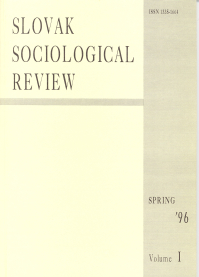Emerging Rural Structures in Central And Eastern Europe - Heterogeneity Instead of Uniformity
Emerging Rural Structures in Central And Eastern Europe - Heterogeneity Instead of Uniformity
Author(s): Gejza BlaasSubject(s): Social Sciences
Published by: SAV - Slovenská akadémia vied - Sociologický ústav
Keywords: Agriculture; restructuring; Central and Eastern Europe
Summary/Abstract: In their transitions to market economies since the late eighties nearly all CEEC countries have undergone certain changes in their rural structures, with the possible exceptions of Poland and Slovenia. In the remaining countries - partly due to diverse policies and partly in spite of those policies - a certain variety of patterns in farming have arisen. They can be classified by the assistance of at least the following criteria: the scale of farming, land ownership versus tenancy of farm operators, and the legal form of the farm business. In these regions, a variety of farming practice patterns ranging from a falling-back to self-subsistence farming to commercial corporate farming expanding in downstream sectors can be found. This paper will discuss some of the factors which influence the pace and type of structural changes in CEEC countries. These factors are: the economic setting, policy, social situations and region. The author is supporting the hypothesis that the simplistic idea of "family farmerization" of the CEEC rural structure is not feasible– neither from an economic nor from a social structure point of view. Elaboration of alternative visions that are more structured and realistic seems to be necessary.
Journal: Sociológia - Slovak Sociological Review
- Issue Year: 1996
- Issue No: Spring
- Page Range: 23-29
- Page Count: 7
- Language: English

